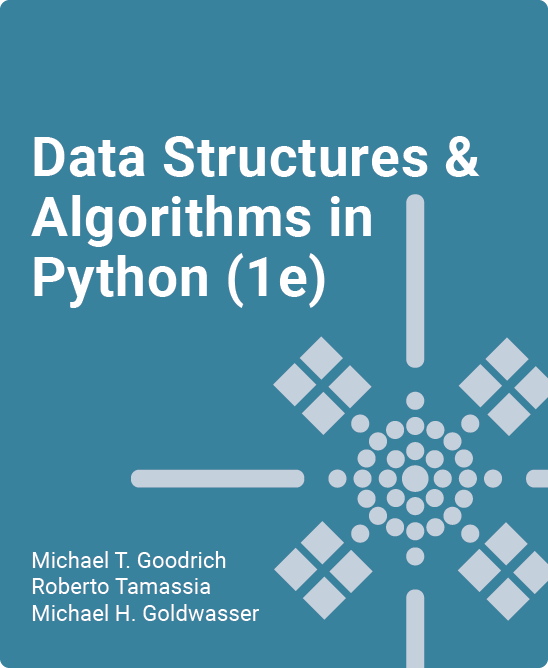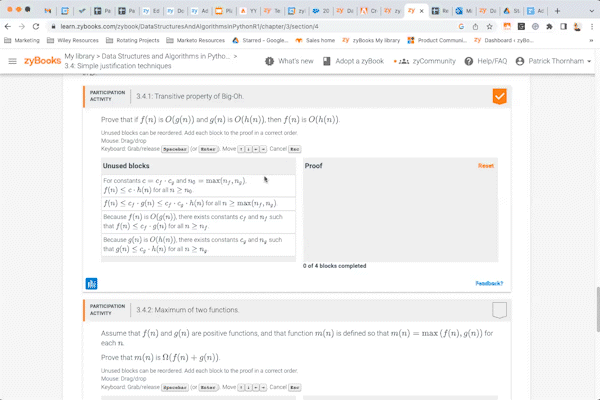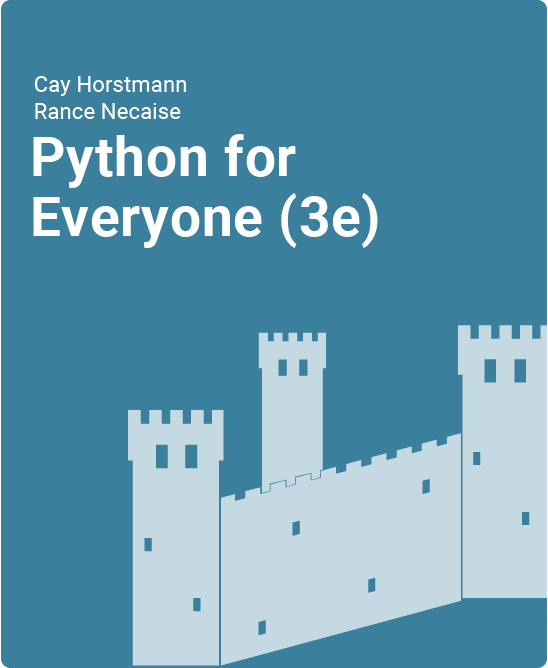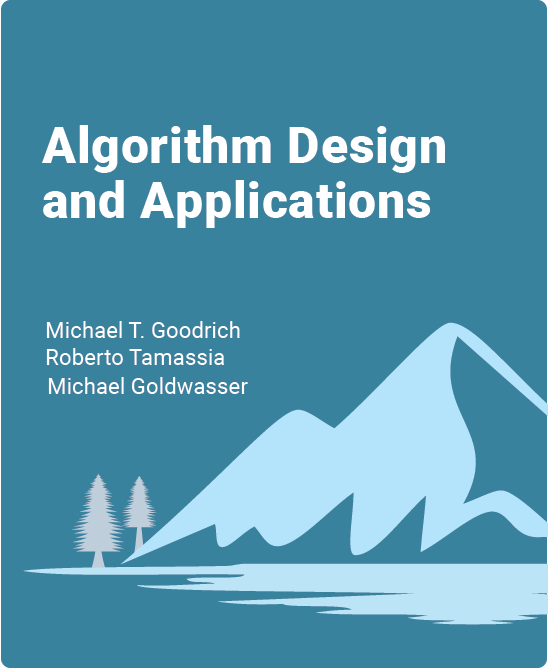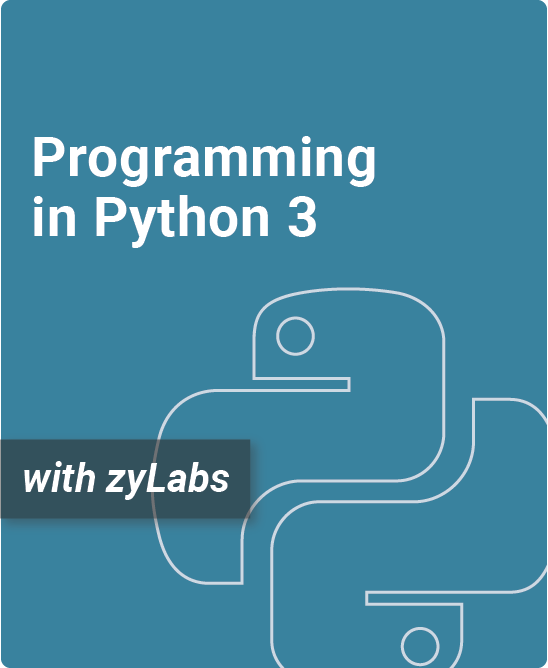Table of Contents
1. Python Primer
1.1 Python overview
1.2 Objects in Python
1.3 Operators and expressions
1.4 Collection types
1.5 Control flow
1.6 Functions
1.7 Simple input and output
1.8 Exception handling
1.9 Iterators and generators
1.10 Additional Python conveniences
1.11 Scopes and namespaces
1.12 Modules and the import statement
1.13 Exercises
1.14 Chapter notes
2. Object-Oriented Programming
2.1 Goals, principles, and patterns
2.2 Software development
2.3 Class definitions
2.4 Inheritance
2.5 Namespaces and object-orientation
2.6 Shallow and deep copying
2.7 Exercises
2.8 Chapter notes
3. Algorithm Analysis
3.1 Experimental studies
3.2 The seven functions used in this book
3.3 Asymptotic analysis
3.4 Simple justification techniques
3.5 Exercises
3.6 Chapter notes
4. Recursion
4.1 Illustrative examples of recursion
4.2 Analyzing recursive algorithms
4.3 Designing recursive algorithms
4.4 Recursion run amok
4.5 Eliminating tail recursion
4.6 Exercises
4.7 Chapter notes
5. Array-Based Sequences
5.1 Python’s sequence types
5.2 Low-level arrays
5.3 Dynamic arrays and amortization
5.4 Efficiency of Python’s sequence types
5.5 Case study: A Scoreboard class
5.6 Case study: Insertion-sort
5.7 Case study: Simple cryptography
5.8 Multidimensional data
5.9 Exercises
5.10 Chapter notes
6. Stacks, Queues, and Deques
6.1 Stacks
6.2 Queues
6.3 Double-ended queues
6.4 Exercises
6.5 Chapter notes
7. Linked Lists
7.1 Singly linked lists
7.2 Circularly linked lists
7.3 Doubly linked lists
7.4 The positional list ADT
7.5 Sorting a positional list
7.6 Case study: Maintaining access frequencies
7.7 Link-based vs. array-based sequences
7.8 Exercises
7.9 Chapter notes
8. Trees
8.1 General trees
8.2 Binary trees
8.3 Linked tree representations
8.4 Array-based tree representations
8.5 Tree traversal algorithms
8.6 Applications of tree traversals
8.7 Case study: An expression tree
8.8 Euler tours
8.9 Exercises
8.10 Chapter notes
9. Priority Queues
9.1 The priority queue abstract data type
9.2 Implementing a priority queue
9.3 Heaps
9.4 Bottom-up heap construction
9.5 Sorting with a priority queue
9.6 Adaptable priority queues
9.7 Exercises
9.8 Chapter notes
10. Maps, Hash Tables, and Skip Lists
10.1 Maps and dictionaries
10.2 Hash tables
10.3 Sorted maps
10.4 Skip lists
10.5 Sets, multisets, and multimaps
10.6 Exercises
10.7 Chapter notes
11. Search Trees
11.1 Binary search trees
11.2 Balanced search trees
11.3 AVL trees
11.4 Splay trees
11.5 (2,4) trees
11.6 Red-black trees
11.7 Exercises
11.8 Chapter notes
12. Sorting and Selection
12.1 Sorting algorithms
12.2 Merge-sort
12.3 Quick-sort
12.4 Studying sorting through an algorithmic lens
12.5 Comparing sorting algorithms
12.6 Python’s built-in sorting functions
12.7 Selection
12.8 Exercises
12.9 Chapter notes
13. Text Processing
13.1 Abundance of digitized text
13.2 Pattern-matching algorithms
13.3 Tries
13.4 Text compression and the greedy method
13.5 Dynamic programming
13.6 Exercises
13.7 Chapter notes
14. Graph Algorithms
14.1 Graphs
14.2 Data structures for graphs
14.3 Python implementation
14.4 Graph traversals
14.5 Transitive closure
14.6 Directed acyclic graphs
14.7 Shortest paths
14.8 Minimum spanning trees
14.9 Disjoint partitions and union-find structures
14.10 Exercises
14.11 Chapter notes
15. Memory Management and B-Trees
15.1 Memory management
15.2 Memory hierarchies and caching
15.3 External searching and B-trees
15.4 External-memory sorting
15.5 Exercises
15.6 Chapter notes
16. Appendices
16.1 Character strings in Python
16.2 Useful mathematical facts
17. Bibliography
17.1 Bibliography
The zyBooks version of the Data Structures & Algorithms in Python textbook provides a powerful interactive learning environment
The Data Structures & Algorithms in Python zyVersion contains the complete 1st edition content of the authors’ object-oriented Python data structures book, which is based on their market-leading data structure books in Java and C++.
- Offers a comprehensive introduction to data structures and algorithms, including their design, analysis, and implementation
- Includes over 50 interactive animations that enhance learning with step-by-step dynamic illustrations of algorithms, data structure operations, and other key concepts
- Includes over 150 question sets embedded throughout the book that provide immediate feedback to learners, plus over 750 end-of-chapter exercises
- Extensive Python source code is consistent with standard Python APIs; the entire codebase is available online
Co-author Professor Michael Goldwasser demonstrates the power of an interactive approach to data structures:
What is a zyVersion?
zyVersions are leading print titles converted and adapted to zyBooks’ interactive learning platform, allowing for a quick and easy transition to an engaging digital experience for instructors and students.
zyBooks’ web-native content helps students visualize concepts to learn faster and more effectively than with a traditional textbook. (Check out our research.)
This zyVersion of Data Structures & Algorithms in Python benefits both students and instructors:
- Instructor benefits
- Customize your course by reorganizing existing content or adding your own
- Continuous publication model updates your course with the latest content and technologies
- Robust reporting gives you insight into students’ progress, reading and participation
- Animations and other interactive content can be shown in presentation mode and used during a lecture
- Student benefits
- Learning questions and other content serve as an interactive form of reading
- Instant feedback on homework
- Concepts come to life through extensive animations embedded into the interactive content
- Save chapters as PDFs to reference the material at any time
Example of an animated Parson’s Proof from this zyVersion
Authors
Michael Goodrich, PhD
Distinguished Professor of Computer Science / University of California, Irvine
Roberto Tamassia, PhD
Professor of Computer Science / Brown University
Michael Goldwasser, PhD
Professor of Computer Science / Saint Louis University
